Drawing parallels: Martin Parr pays tribute to Tony Ray-Jones
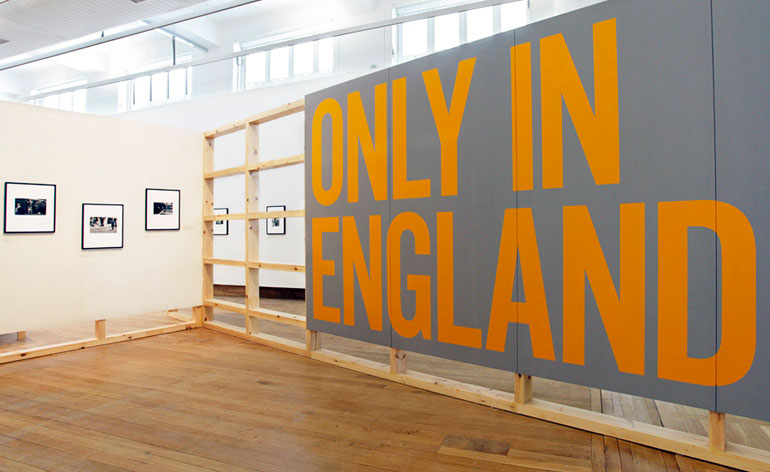
The British photographer Tony Ray-Jones died in 1972 at the age of 30. In his short career, Ray-Jones helped transform British photography, his work influencing a whole generation of photographers, particularly a young Martin Parr.
Ray-Jones' work and impact is being celebrated on multiple fronts this autumn. A new book, 'American Colour 1962-1965', collects previously unpublished images from his formative stretch in the United States while 'Only in England: Photographs by Tony Ray-Jones and Martin Parr' is the opening show at the new Ben Kelly-designed Media Space at London's Science Museum.
Ray-Jones studied graphics and photography at the London School of Printing before winning a scholarship to study graphics at Yale, taking time out in New York to work and study with the legendary Condé Nast art director Alexey Brodovitch. It wasn't long before he committed himself to photography full time.
He returned to England in 1965, armed with huge ambition and an anthropologist's urge to record, classify and even celebrate disappearing tribes (made clear in letters and notebooks included in the 'Only in England' show). He was also determined on bringing the in-their-face punch, drama and narrative drive of American street photography, as practiced by Robert Frank and his friend Gary Winongrand in particular, to English subject matter.
'American Colour', published by Mack, is a selection of pictures taken in New York as well as Detroit and Daytona Beach, Florida, many with his fellow photographer Joel Meyerowitz for company. Ray-Jones called these pictures 'isolated sketches', first steps, shot in colour before William Eggleston and Stephen Shore made that an acceptable thing to do for a photographer of serious intent. And if these pictures only hint at what was to come, they show a developing compositional sense and a nose for the right subject and the nerve to stay with them. (And Hipstamatic fiends will love the Kodachrome cool).
'Only in England' meanwhile is a new survey of the pictures Ray-Jones took in England between 1966 and 1969, some of which were shown at the ICA's first photography show 'The English Seen', alongside work by Don McCullin and others, just before Ray-Jones died. The show includes 60 pictures printed by Ray-Jones and 57 printed by Martin Parr (all in black and white this time) after an exhaustive trawl though the 2700 contact sheets and negatives held by the National Media Museum in Sheffield. And part of the fascination of the show is how Parr treats them, picking the most Parr-like, blowing them up.
The point of the show of course is how much Ray-Jones' English pictures, first collected in the book 'A Day Off - An English Journal', published four years after his death, influenced the young Parr. And the exhibition also includes rarely-shown pictures from Parr's first major project, 'The Non-Conformists', shot in and around the town of Hebden Bridge in the early '70s (published in book form for the first time last month by Aperture).
Ray-Jones found his particular English social theatre not on the streets but at seaside resorts yet to suffer post-package deal decline but clearly vulnerable to any affordable alternative; at carnivals and ritualised events, from Glynderbourne to to Crufts; and at Eton and Margate. But they avoid sentimentality or cruelty; no freak show to see here.
And the pictures are as remarkable for the spaces between people as the subjects themselves, with several stories unfolding in the same shot. Parr's early pictures are, oddly, more formal, more composed, less fun. It wasn't until his breakthrough work 'The Last Resort' that Parr really developed what Ray-Jones started and took it somewhere else, if in the same places.
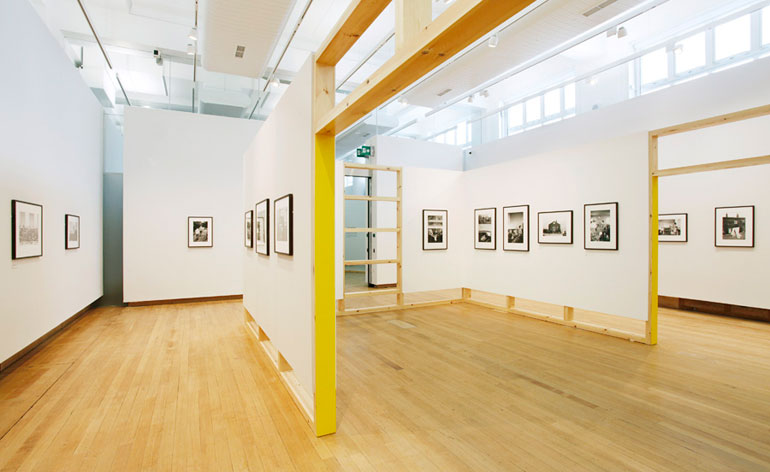
Entitled 'Only in England', the new survey encompasses pictures that Ray-Jones took in England between 1966 and 1969. The show includes 60 pictures printed by Ray-Jones and 57 printed by Martin Parr (all in black and white this time) after an exhaustive trawl though the 2700 contact sheets and negatives held by the National Media Museum in Sheffield.
Watch photographs from the show unfold, as Greg Hobson, curator of photographs at the National Media Museum, explains how the exhibition came to fruition
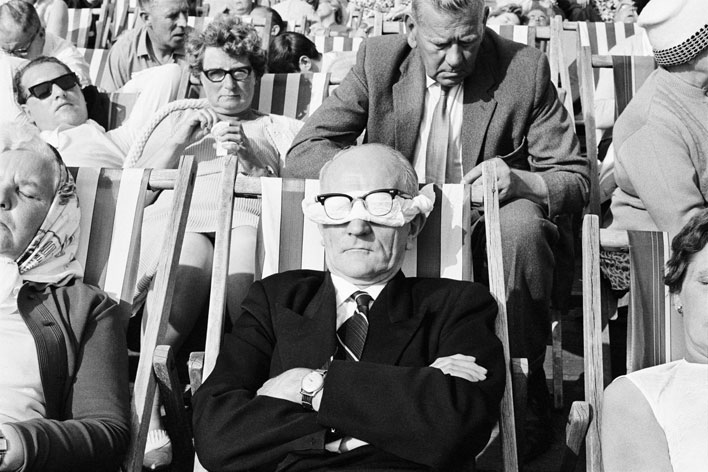
'Man in deck chair, eyes covered', Blackpool, 1968 © National Media Museum
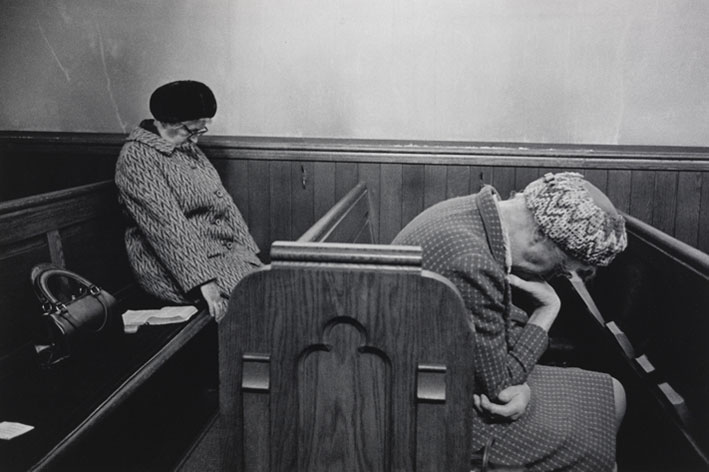
'Mankinholes Methodist Chapel, Todmorden', bu Martin Parr, 1975
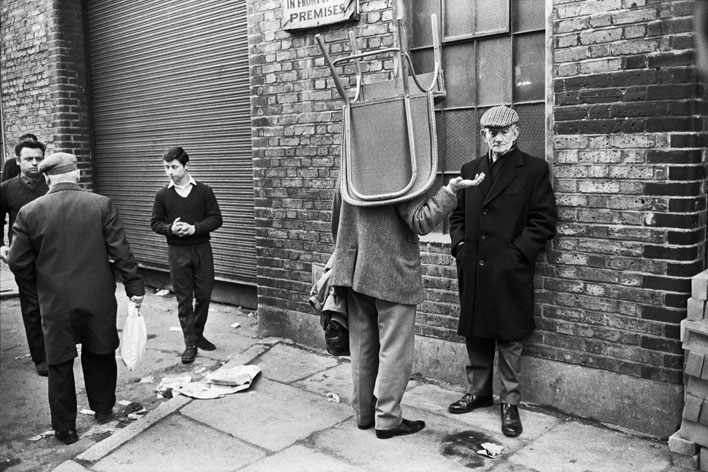
'Chair on Head', Brick Lane Market, 1966 © National Media Museum
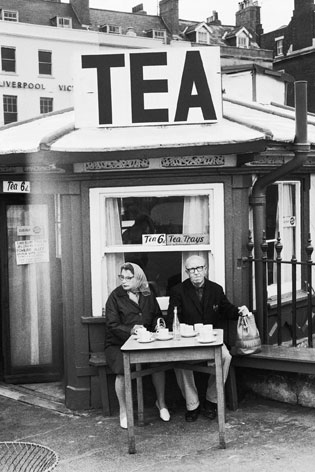
'Tea hut', c. 1967 © National Media Museum
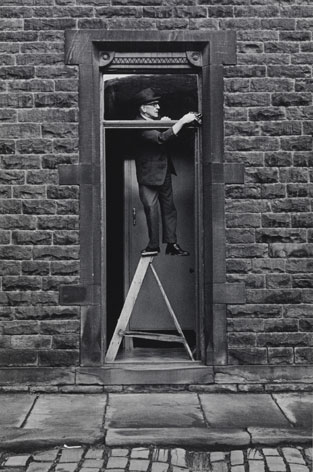
'Tom Greenwood cleaning', 1976 © Martin Parr / Magnum
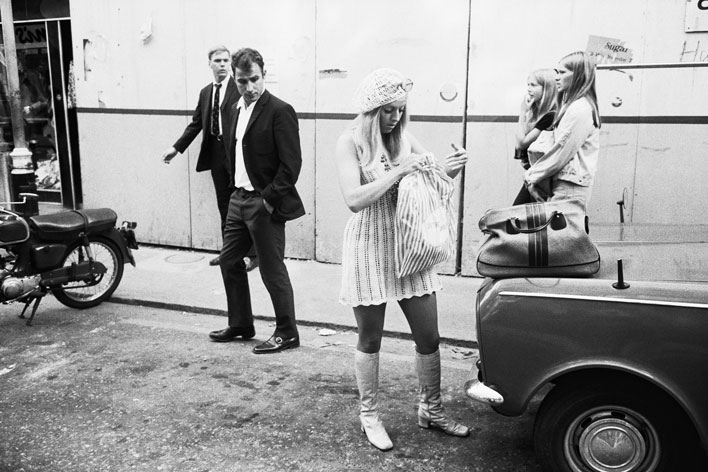
'Man checking out woman on street', Carnaby Street, London, c. 1967 © National Media Museum
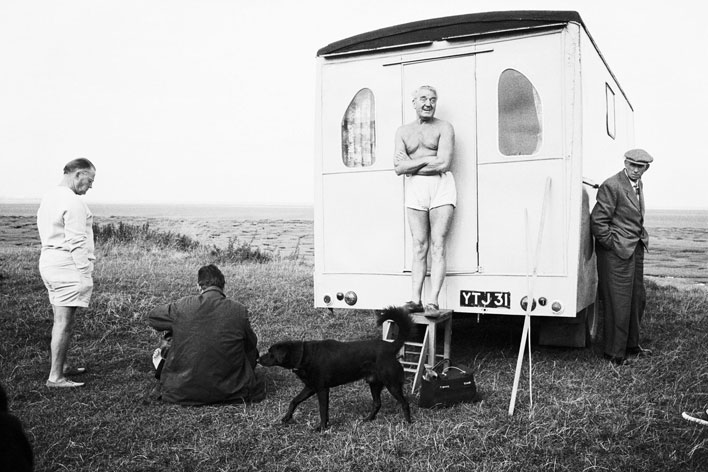
'Man in swimming trunks against caravan', 1967-68 © National Media Museum
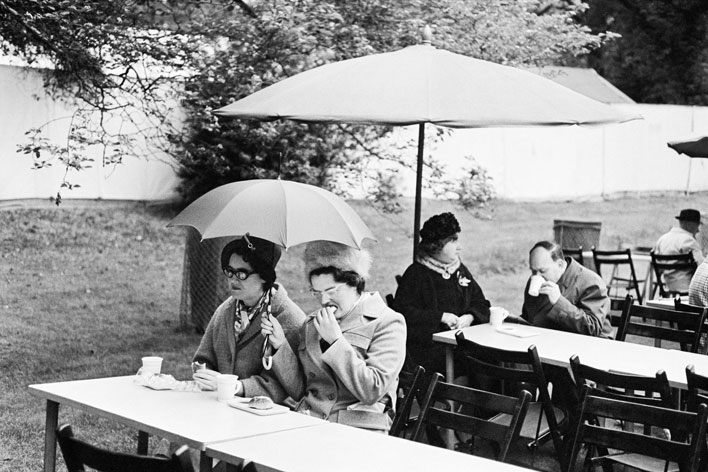
'Women under umbrellas at picnic table', May Day Celebrations, c. 1967 © National Media Museum
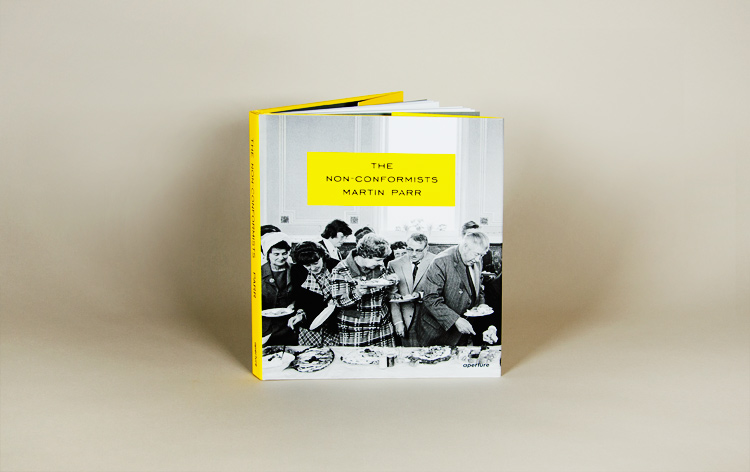
Two books have recently been published that serve as companions to the material in the show. The first, Martin Parr's 'The Non-Conformists', was released by Aperture Foundation to coincide with the exhibition and shows his first body of work, many of which are on display in the gallery
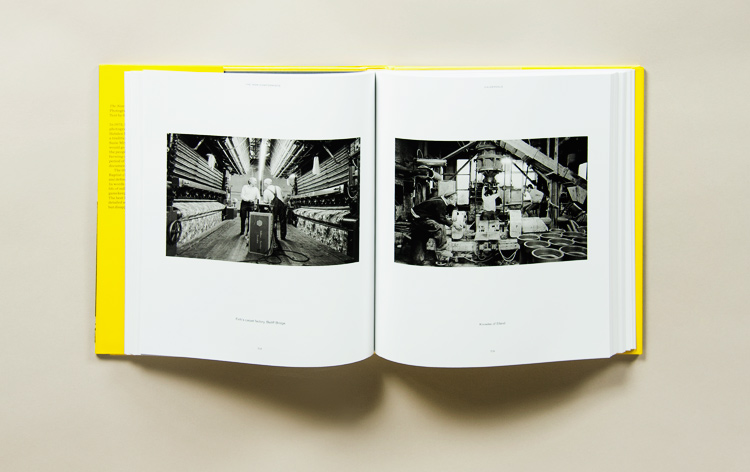
A spread from the book depicts 'Firth's carpet factory, Bailiff Bridge' (left) and 'Knowles of Elland' (right)
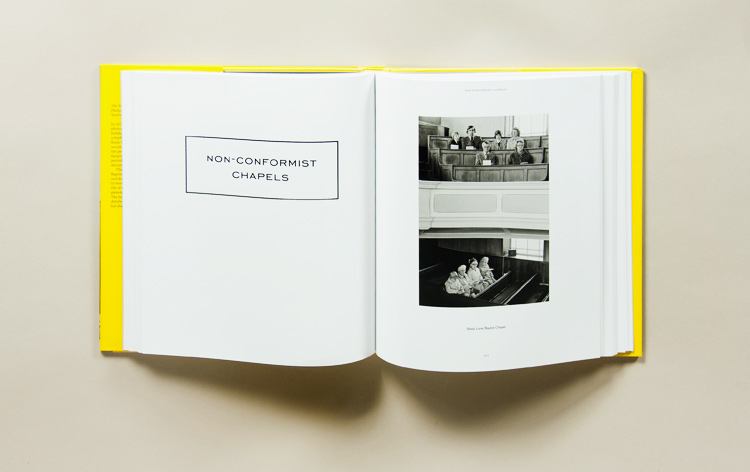
A chapter on non-conformist chapels opens with a photograph inside Steep Lane Baptist Chapel
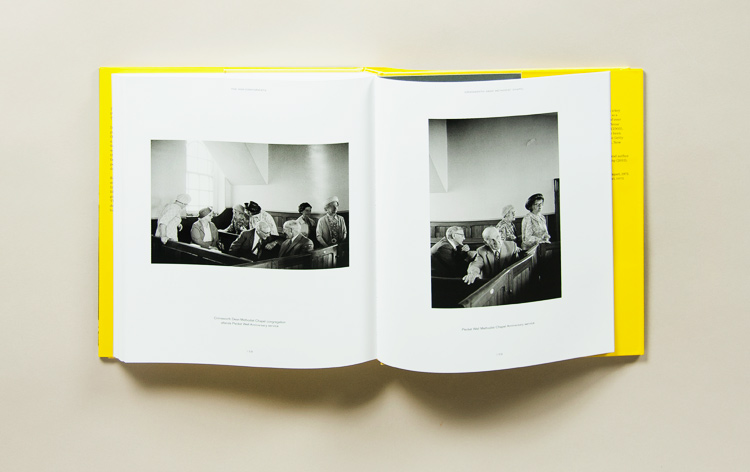
'Crimsworth Dean Methodist Chapel congregation attends Pecket Well Anniversary service' (left) and 'Pecket Well Methodist Chapel Anniversary service' (right)
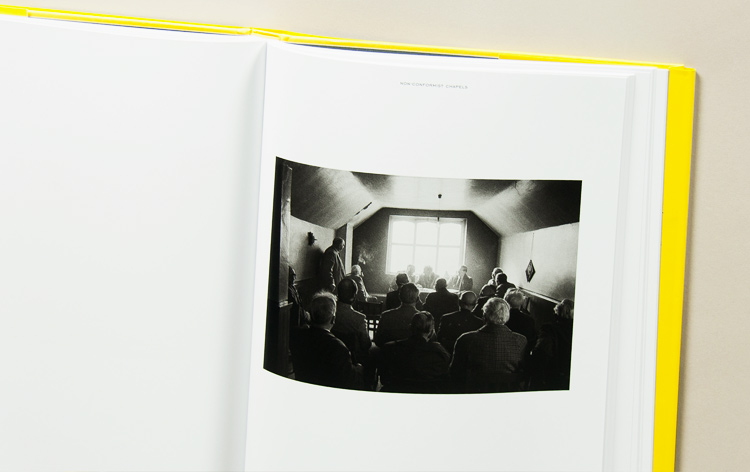
'The Ancient Order of Henpecked Husbands annual general meeting, Easter Monday, Nazebottom Chapel', by Martin Parr
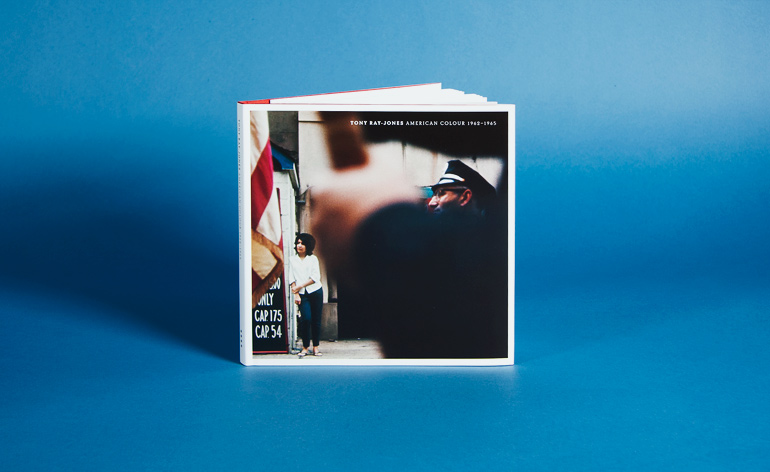
The second tome loosely tied to the exhibition, 'American Colour 1962-1865', focuses on Tony Ray-Jones’ photographs taken in New York as well as Detroit and Daytona Beach, Florida, many with his fellow photographer Joel Meyerowitz for company
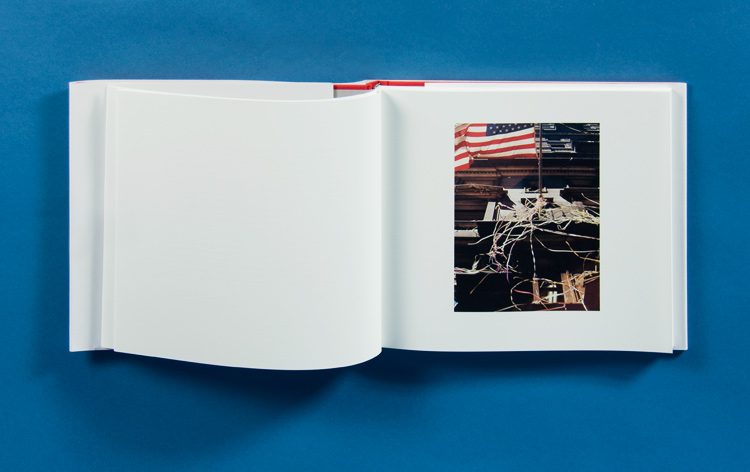
Ray-Jones called these pictures 'isolated sketches', first steps, shot in colour before William Eggleston and Stephen Shore made that an acceptable thing to do for a photographer of serious intent
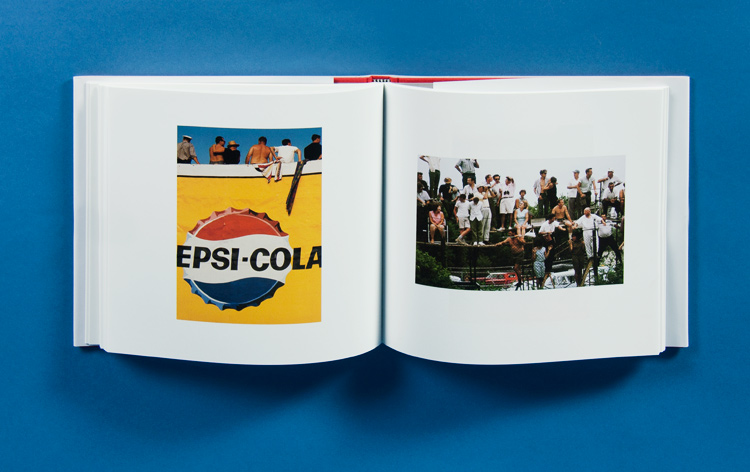
The book collects previously unpublished images from his formative stretch in the United States, offering a rare glimpse at the work he produced as a young artist in a new country
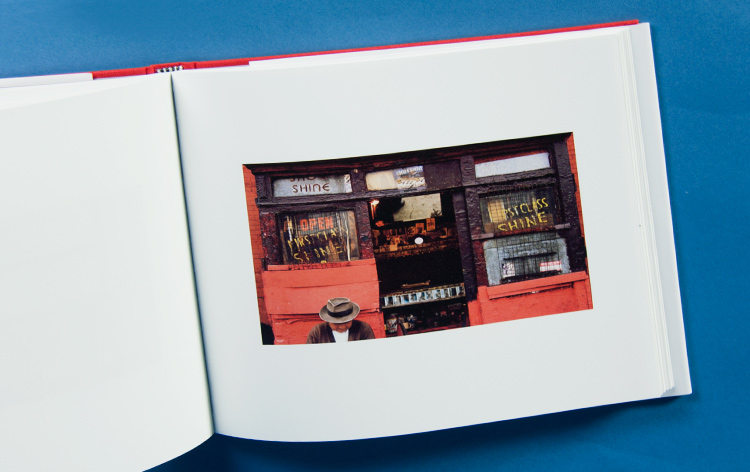
Ray-Jones once explained, 'I found America a very colour-conscious country. When I got back to England I found everything so grey that I didn't see the point of shooting in colour. To me, Britain is very much a black-and-white country'
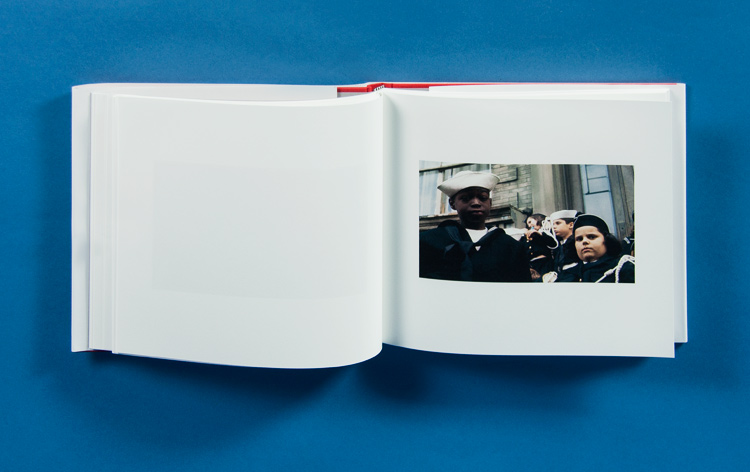
And if these pictures only hint at what was to come, they show a developing compositional sense and a nose for the right subject and the nerve to stay with them
ADDRESS
Science Museum
Exhibition Rd
London SW7 2DD
Wallpaper* Newsletter
Receive our daily digest of inspiration, escapism and design stories from around the world direct to your inbox.
-
 All-In is the Paris-based label making full-force fashion for main character dressing
All-In is the Paris-based label making full-force fashion for main character dressingPart of our monthly Uprising series, Wallpaper* meets Benjamin Barron and Bror August Vestbø of All-In, the LVMH Prize-nominated label which bases its collections on a riotous cast of characters – real and imagined
By Orla Brennan
-
 Maserati joins forces with Giorgetti for a turbo-charged relationship
Maserati joins forces with Giorgetti for a turbo-charged relationshipAnnouncing their marriage during Milan Design Week, the brands unveiled a collection, a car and a long term commitment
By Hugo Macdonald
-
 Through an innovative new training program, Poltrona Frau aims to safeguard Italian craft
Through an innovative new training program, Poltrona Frau aims to safeguard Italian craftThe heritage furniture manufacturer is training a new generation of leather artisans
By Cristina Kiran Piotti